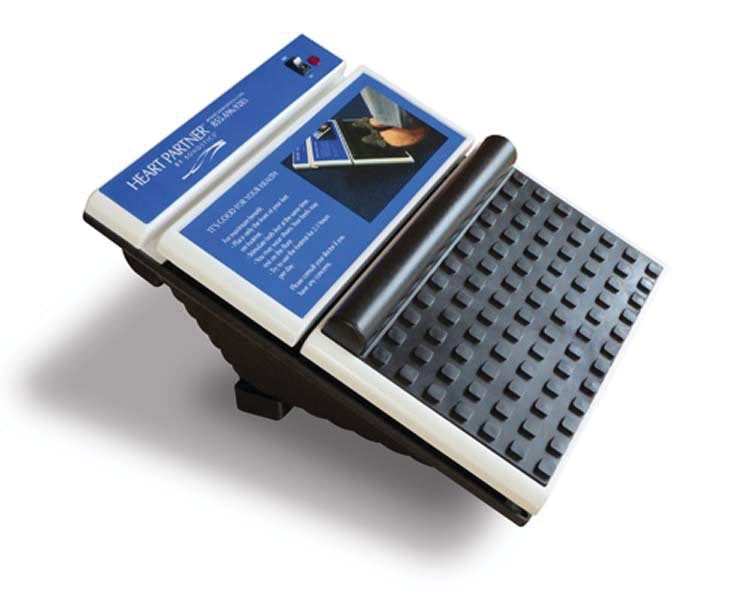Maintaining proper circulation can prevent what we often see as normal signs of aging, including memory loss, dizziness, and chronic fatigue.
By Dr. Ken McLeod, Professor at the State University of New York at Binghamton
Most people are well aware of the health complications associated with high blood pressure. As we enter middle-age, our blood pressure tends to rise, and with this rise, the risk of heart disease and stroke increases. What far fewer recognize is that this pattern extends only up to our mid-50s or early 60s, after which our blood pressure – in particular our diastolic pressure – starts declining. This decline can lead to a condition called orthostatic hypotension, or a blood pressure which is too low when we are sitting or standing upright. As we continue to age, the risk of orthostatic hypotension (OH) continues to increase.


Chronically low blood pressure leads to numerous complications which tend to fall into the category of quality of life issues rather than medical complications. For example, low blood pressure commonly leads to dizziness and an increased risk of fainting or falling.
But another serious complication of OH is a decline in cognitive function, including dementia. In long-term studies where individuals are followed for up to 20 years, low pressure was found to be associated with a 5-10-fold increase in the likelihood of developing some form of dementia and a doubling of the risk of developing Alzheimer’s Disease.
Even in young adults, it has been shown that remarkably small decreases in blood pressure below the normal level are sufficient to result in significant declines in cognitive performance, including decreased attention span, decreases in working memory, and decreased reaction times.
Why does our blood pressure start dropping after middle age?
A common reason for the drop in blood pressure is that our leg muscles become weak as we age, largely due to disuse. The heart can only maintain normal blood pressure if sufficient blood comes back to the heart between contractions. When we are sitting or standing upright, gravity is pulling all the blood in our body down into our legs. Without adequate leg muscle activity, this blood does not get back to our hearts, our circulation decreases, and our blood pressure drops.
One set of muscles, in particular, are essential to ensuring good circulation – these are the soleus muscles in the calves of our legs. These muscles are so crucial that physiologists refer to them as our secondary hearts. However, if we have a sedentary lifestyle – primarily sitting all day, and Americans sit on average for 13 hours a day – then the soleus muscles lose their ability to pump blood back up to the heart effectively.
How To Improve and Maintain Proper Circulation For Life
Fortunately, like any muscle, the soleus muscles can be trained back up if they become weakened. The soleus muscles are deep postural muscles, and the trick to training them is long duration, low-level, exercise. For example, standing on our toes for long durations is a good way to train up the soleus muscles, so exercises such as Tai Chi and Yoga can be excellent. The challenge with such exercise routines is that they have to be performed for at least one hour a day, and preferably two to three hours per day, which does not fit with most peoples’ lifestyle or physical ability.
There Is Another Way
HeartPartner is a passive-exercise device that utilizes vibration technology to strengthen the soleus muscles that help return blood to the upper body to maintain healthy cardiac output. It’s easy and convenient to use at home or work while sitting in a chair, at a desk, or table for just a few hours over the course of a day. HeartPartner can not only improve memory and concentration, but also addresses other conditions related to poor circulation such as leg cramps and swelling, varicose veins, fatigue, and weight control.
I’ve heard the Chinese have a saying “Health begins in your feet” and perhaps nowhere is this more accurate than in maintaining heart and cognitive health in older individuals.
“The thing I really like about HeartPartner is you don’t have to take your shoes off, you don’t have to change your clothes, or go to the gym, or put something on. You simply sit down, put the front of your feet on the footpad for 90 minutes while you watch television or read a book. It is that easy.”
— Winnie B., Orlando, Fla.
Dr. Kenneth J. McLeod, Ph.D., is President and Chief Executive Officer at Sonostics, developer of the HeartPartner. He also serves as Director of the Clinical Science and Engineering Research Center at Binghamton University in New York. Dr. McLeod received his Ph.D. degrees in Biomedical Engineering from the Massachusetts Institute of Technology.
To learn more about HeartPartner please visit www.sonostics.com or call us
Toll Free at 1-855-696-9283.
 Southwest Florida's Health and Wellness Magazine Health and Wellness Articles
Southwest Florida's Health and Wellness Magazine Health and Wellness Articles

